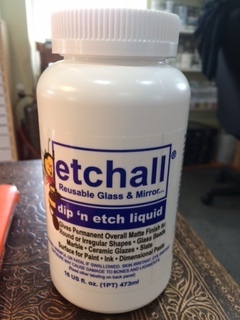Notifications




I tried this last night for the first time. It worked pretty well!
What I found interesting was that the backs of the copper pieces had no enamel, scalex, or other protection against oxidation - yet they did not oxidize very much at all.
Apparently, the flames from the mixture burning off used up almost all the oxygen in the kiln.
Woke up this morning with a cunning plan.
I'm seriously considering putting in a little pyre of this mixture in the kiln when I do copper wire cloisonne pieces. Hopefully, the wire will barely oxidize...
I tried this last night for the first time. It worked pretty well!
What I found interesting was that the backs of the copper pieces had no enamel, scalex, or other protection against oxidation - yet they did not oxidize very much at all.
Apparently, the flames from the mixture burning off used up almost all the oxygen in the kiln.
Woke up this morning with a cunning plan.
I'm seriously considering putting in a little pyre of this mixture in the kiln when I do copper wire cloisonne pieces. Hopefully, the wire will barely oxidize...
I had a few minutes to spare this evening and gave my idea a try.
I took some scrap copper sheet and cleaned it up, sprinkled some clear enamel on it and placed some copper wire on that. No Klyrfire, scalex or any other protective product over the copper.
I put the tartar/salt mixture in a tiny copper bowl at the back of the planche and my enameled piece on a trivet on the front of the planche.
The tartar/salt mixture caught fire and burned the oxygen out of the kiln chamber.
The enamel fired clear and clean. I popped the copper piece into the pickle for a minute and then gave it a VERY light brash brushing. It cleaned up beautifully!
No nasty, crusty, hard to clean oxidation on the copper!
I'll be writing Paragon to ask if there is anything to worry about regarding damage to the kiln.Â
I have yet to do any experiments with colored enamels. I suspect some of them may fire into somewhat different colors without the oxygen. It's also possible that the top most layers won't need to use this trick because the copper cloisonne wire will be covered on all the sides, so they might oxidise to the normal colors.
Hopefully I'll have some time this weekend to test it out...
I had a few minutes to spare this evening and gave my idea a try.
I took some scrap copper sheet and cleaned it up, sprinkled some clear enamel on it and placed some copper wire on that. No Klyrfire, scalex or any other protective product over the copper.
I put the tartar/salt mixture in a tiny copper bowl at the back of the planche and my enameled piece on a trivet on the front of the planche.
The tartar/salt mixture caught fire and burned the oxygen out of the kiln chamber.
The enamel fired clear and clean. I popped the copper piece into the pickle for a minute and then gave it a VERY light brash brushing. It cleaned up beautifully!
No nasty, crusty, hard to clean oxidation on the copper!
I'll be writing Paragon to ask if there is anything to worry about regarding damage to the kiln.Â
I have yet to do any experiments with colored enamels. I suspect some of them may fire into somewhat different colors without the oxygen. It's also possible that the top most layers won't need to use this trick because the copper cloisonne wire will be covered on all the sides, so they might oxidise to the normal colors.
Hopefully I'll have some time this weekend to test it out...